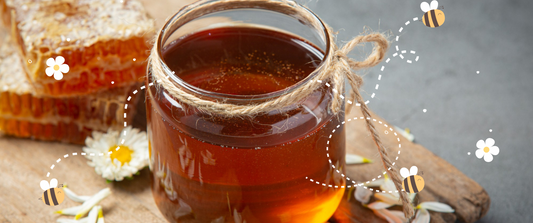In a world where natural, unadulterated foods are becoming increasingly rare, honey has stood the test of time as a symbol of pure, untamed sweetness. However, the story behind the honey on our supermarket shelves is not as golden as it seems. Mass consumer brands often subject honey to unnecessary pasteurization and processing, which sacrifices its innate nutritional value and flavor diversity.
This article dives into the reasons why honey is subjected to these processes, the consequences of such practices, and the importance of choosing raw honey.
The Process of Pasteurization: Unveiling the Mask
Mass consumer brands often subject honey to pasteurization, a process that involves heating the honey to high temperatures (sometimes uptill 65°C) to kill any potential bacteria and yeast. While this may seem like a practical way to ensure safety and uniformity, the truth is that raw honey possesses natural antibacterial properties that make pasteurization largely unnecessary.
Uniform Appearance: A Bland Facade
Have you ever noticed how the color and flavor of honey (from the popular brands) that we have been consuming since childhood have remained largely consistent? This stands in stark contrast to the fact that honey is a natural product, and natural variations are inevitable.
Shelf Life Extension vs. Nutritional Depletion
Most of the honey harvested in the country is collected from the brood chamber where it remains uncapped. Being uncapped, it naturally contains high moisture content. As bees initially deposit nectar in the brood chamber before storing surplus in the super chamber of the hive, the practice of extracting uncapped and unripened honey from the brood chamber has become a shortcut for honey harvesters. This practice is not only unethical towards bee colonies but also cruel, as it results in the destruction of immature larvae and eggs during the extraction process.
So, what's the alternative?
Raw honey, sourced directly from beekeepers or local producers, skips the harmful processes that strip honey of its vitality. By opting for raw honey, you're embracing a product teeming with live enzymes, vitamins, minerals, and antioxidants. These elements contribute to its potential to aid digestion, boost the immune system, and even soothe sore throats.
The next time you dip your spoon into a jar of honey, let it serve as a reminder that nature's gifts are best enjoyed when they're left untouched, unaltered, and raw.






